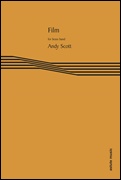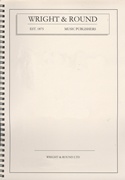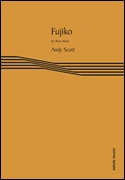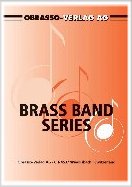Results
-
 £24.95
£24.95FILM (Baritone Solo with Brass Band Parts) - Scott, Andy
Brass Band parts only. A feature for solo baritone in a melodic & atmospheric Ennio Morricone inspired piece. Dur: 3:30
Estimated dispatch 7-14 working days
-
 £15.00
£15.00FILM (Baritone Solo with Brass Band Score) - Scott, Andy
Brass Band score only. A feature for solo baritone in a melodic & atmospheric Ennio Morricone inspired piece. Dur: 3:30
Estimated dispatch 7-14 working days
-
 £26.50
£26.50Fleur de Lis (Solo Cornet/Brass Band)
Cornet Solo with Brass Band
Estimated dispatch 7-14 working days
-
 £26.50
£26.50Flying Scot, The (Cornet Solo/Brass Band)
Solo Cornet with Brass Band
Estimated dispatch 7-14 working days
-
 £37.95
£37.95FOLKS WHO LIVE ON THE HILL, The (Flugel Horn Solo with Brass Band) - Richards, Goff
Flugel Horn Solo & Brass Band. Recorded on Polyphonic QPRL045D Making Tracks
Estimated dispatch 7-14 working days
-
 £24.95
£24.95FUJIKO (Cornet Solo with Brass Band Parts) - Scott, Andy - Fieldhouse, Jim
Brass Band parts only. Fujiko is cinematic soundscape that reflects its Japanese roots. A feature for solo cornet that commences with a simple folk-like melody, and builds to a powerful and emotive climax, before an atmospheric and calm ending. Dur: 5:00
Estimated dispatch 7-14 working days
-
 £15.00
£15.00FUJIKO (Cornet Solo with Brass Band Score) - Scott, Andy - Fieldhouse, Jim
Brass Band score only. Fujiko is cinematic soundscape that reflects its Japanese roots. A feature for solo cornet that commences with a simple folk-like melody, and builds to a powerful and emotive climax, before an atmospheric and calm ending. Dur: 5:00
Estimated dispatch 7-14 working days
-
 £26.50
£26.50 -
 £37.95
£37.95HANDEL'S HORNPIPE (Tenor Horn/Brass Band) - Handel, George Frideric - Reader, Bernard
Tenor Horn Solo & Brass Band. A separate Piano Accompaniment edition is also available. Solo UK Grade 8
Estimated dispatch 7-14 working days
-
 £50.90
£50.90HAVE I TOLD YOU LATELY (B flat Cornet or Flugel Horn Solo with Brass Band) - Morrison, Van - Wormald, Christopher
B flat Cornet or Flutelhorn Solo & Brass Band. Grade Easy
Estimated dispatch 7-14 working days
